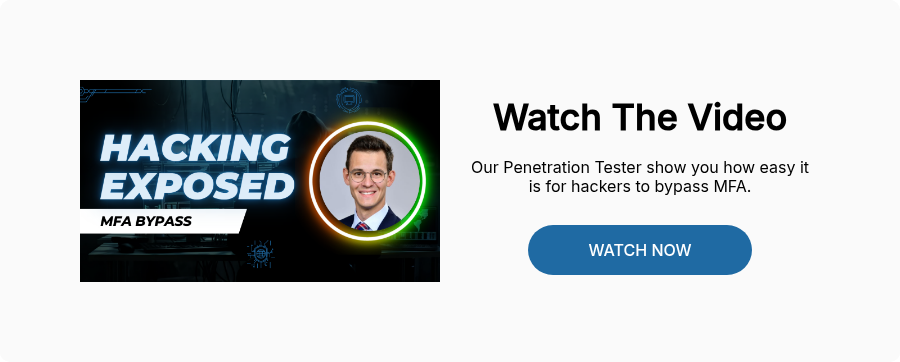Healthcare is one of the most targeted and least prepared industries when it comes to cyber threats. Whether you're running an aged care centre, a clinic, an allied health practice, or a specialist centre, the risk is real: patient data, clinical systems, and your Microsoft 365 environment are all prime targets.
The reality? Most practices think they’re secure because they use cloud tools or have antivirus installed. However, cybercriminals are aware of the blind spots and they exploit them.
Here are the 5 most common vulnerabilities we see in healthcare and how to close the gaps before they become costly.
1. Your Microsoft 365 Setup Is Leaving the Front Door Unlocked
Problem:
Many healthcare teams utilise Microsoft 365 for email, file storage, and referrals, but often fail to update the default security settings. That means open sharing, unprotected inboxes, and no multi-factor authentication.
Why it matters:
One private clinic we worked with had over 200 files shared with "anyone with the link" including pathology results, patient forms, and HR documents. A former contractor accessed them months after leaving.
What to do about it:
A professional security hardening process includes:
-
Enforcing MFA across all users
-
Turning off anonymous file sharing
-
Limiting admin access
-
Applying location and device-based restrictions
Bottom Line:
If your Microsoft 365 hasn't been audited in the past year, you're likely exposed and attackers know it.
2. You Can’t See Suspicious Activity Until It’s Too Late
Problem:
In a busy practice, no one is monitoring logins from overseas, new app installations, or mass downloads from SharePoint. Without monitoring, you're in the dark until something goes wrong.
Why it matters:
We helped a aged care centre detect and block a login attempt from a suspicious location using a legitimate staff account. They had no idea it happened until we installed our 365 Secure Program.
What to do about it:
Monitoring helps you:
-
Track logins outside business hours or from foreign IPs
-
Alert on new mailbox rules or app authorisations
-
Log and audit system changes for compliance
Bottom Line:
Without visibility, threats stay hidden. Monitoring turns unknown risks into manageable actions.
3. You’re Relying on Antivirus to Protect Cloud-Based Records
Problem:
Healthcare practices often trust antivirus to keep systems secure. But antivirus doesn’t stop phishing emails, credential theft, or browser-based threats that target Microsoft 365 and telehealth tools.
Why it matters:
An allied health group using only antivirus software can easily be hit by a phishing scam that redirects all patient appointment confirmations to a fake inbox. No alerts. No flags. Real impact.
What to do about it:
Modern threats need layered protection:
-
Enable advanced email filtering (beyond default Microsoft settings)
-
Apply device compliance policies
-
Use conditional access for BYOD users
-
Review third-party apps with access to patient data
Bottom Line:
The cloud changed how we work and how we need to protect ourselves. Antivirus is no longer enough.
4. No One in the Practice “Owns” Cybersecurity
Problem:
In most clinics, aged care centres, and health teams, cybersecurity is often “shared” between teams or assumed to be handled by their MSP, which means it’s frequently overlooked. With no single person or partner responsible, risks pile up unnoticed.
Why it matters:
It's not uncommon for us to encounter healthcare systems that haven't been updated in 6 months and are riddled with vulnerabilities that are being actively exploited. One click of a link and businesses like
What to do about it:
Assign ownership:
-
Delegate responsibility internally (even part-time)
-
Engage a managed provider to monitor and report monthly
-
Document basic response procedures and who to call
Bottom Line:
Without accountability, things slip through. You don’t need an IT department; you just need a clear owner.
5. Waiting for a Breach Is Still the Default Strategy (Until It’s Too Late)
Problem:
HIPAA, ISO27001, Essential 8 or other compliance standards require more than good intentions. And if you’re breached, the regulators and your patients will expect answers.
Why it matters:
In late 2023, MediSecure, a major Australian e-prescription provider, suffered a large-scale ransomware attack. The incident compromised personal and health data of approximately 12.9 million Australians, including names, birth dates, contact details, Medicare numbers, and medication history. The breach remained undetected for several months and was only publicly confirmed in May 2024. MediSecure ultimately entered voluntary administration after losing its government contract due to the fallout from the incident.
While MediSecure responded alongside federal agencies and cybersecurity specialists, this highlights how unprepared systems can lead to catastrophic exposure, even in regulated sectors
Patient files stored on the clinic’s servers were compromised, system access was blocked, and even after reportedly paying the ransom, many records remained unrecoverable. Staff had no access to diagnosis notes, treatment histories, or appointment schedules—effectively halting services.
What to do about it:
Get ahead of the problem:
-
Run an annual 365 security audit
-
Align to compliance standards like ISO27001 or HIPAA
-
Store and regularly update your incident response plan
-
Educate staff on phishing and security awareness
Bottom Line:
Compliance and security go hand in hand. You don’t get a second chance after a breach.
Take the First Step Toward a More Secure Practice
Healthcare data is sensitive, regulated, and constantly targeted. You don’t need a complex system; you need the right partner and the right process.
Start with a Microsoft 365 Security Audit from 365 Cloud Secure
We’ll assess your environment, identify critical risks, and provide a step-by-step action plan tailored specifically for healthcare.

